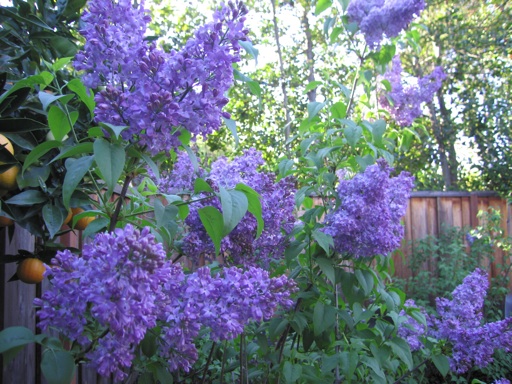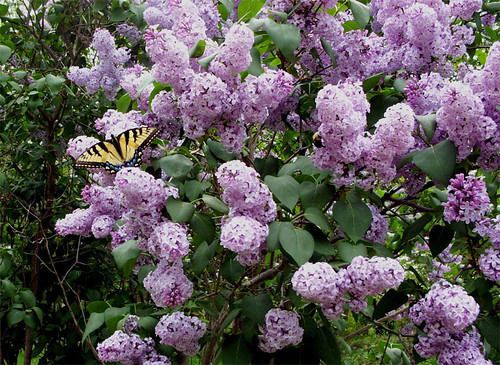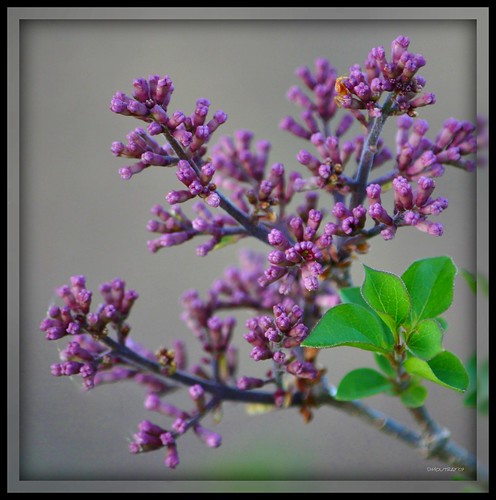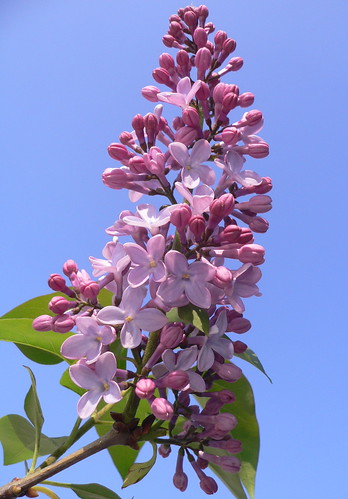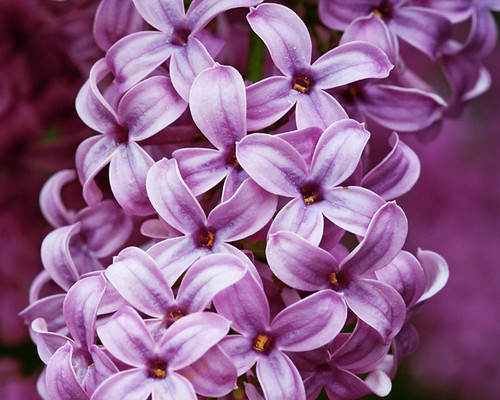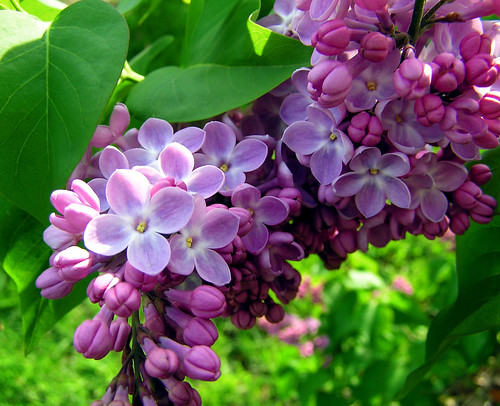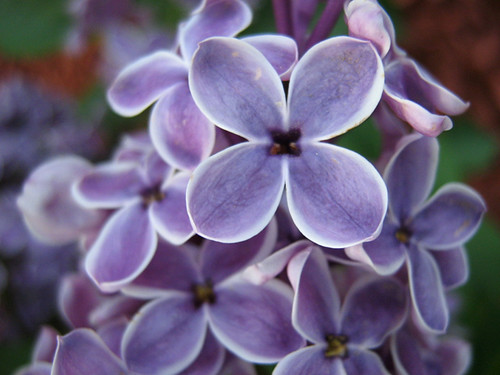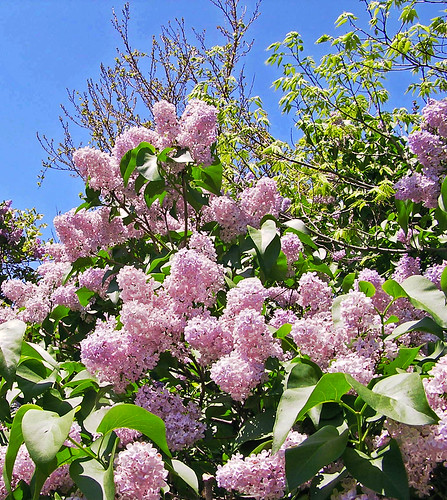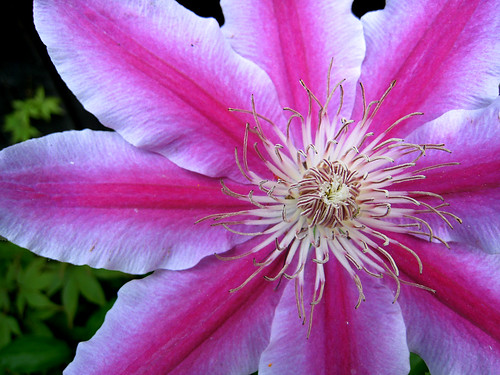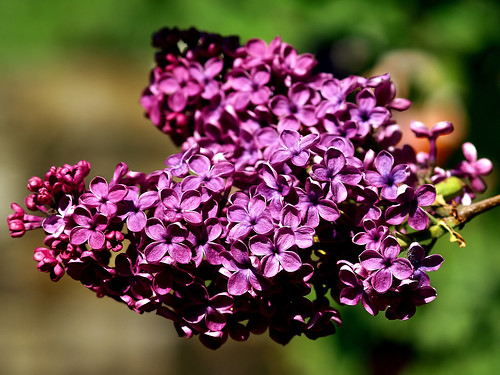
A flower stand of a Common Lilac. by Bienenwabe
The home garden is a joy for the present and is also something one plants for posterity. But when TheGardenLady walks around her garden, so many of the plants that she has were given to her from family and friends in the past and continues in the present. So for me my garden is a place of my personal history and so many of the plants bring back memories of loved ones or the beds recall the fun or pain of digging them in the past. I consider my garden as a living tribute to those whose plants are living here with me. So for me, being in this garden is a way of spending more time with friends and family even when they are not here in the garden themselves.
For example, many of the lilac shrubs Syringa vulgaris, the rose of sharon Hibiscus syriacus shrubs, the wisteria vine and some of the Japanese peonies Paeonia were on TheGardenLady’s parents’ farm. Since my parents were only the second nonnative people to live on their farm, these plants could be considered antique – which means 100 years old. Horticulturists call them heritage plants.

Galium odoratum (Sweet woodruff) by ngawangchodron
The sweet woodruff Galium odoratum was given to me by a dear friend who passed away.
My favorite double daylily, monarda and so many other plants were given to me by another friend who passed away. And my Magnolia grandiflora that I look at through my living room window was won in a raffle that this friend’s garden club had sponsored. The first raffle I ever won.
So many of my new personal favorite plants were given to me by friends who have spectacular gardens.

dictamnus by peltierpatrick
For example, my Dictamnus or gas plant was given to me by a lady whose garden is a show place. My French lilac and many of my giant hostas and other plants come from another friend with a show garden. I can go on and on about the different gardens and friends the plants come from.
Once when I took a tour of someone’s private garden, her labels not only gave the Latin name and common name of the plant but also included the name of the family or friend who gave her the plant. I thought this was such a clever idea that someday TheGardenLady wants to copy this idea in her personal garden.

